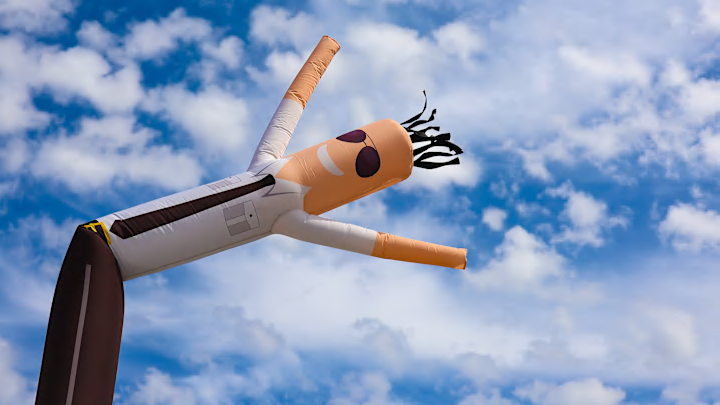When people think of robots, the word soft usually doesn’t come to mind. Traditional machines are typically made of sturdier materials, such as aluminum or steel. But scientists recently made a soft “robot” capable of walking, jumping, and swimming using technology similar to the inflatable tube men spotted at car dealerships.
Per Popular Science, researchers from the Netherlands’ Institute for Atomic and Molecular Physics (AMOLF) figured out how to power the machine using a continuous airflow—no AI, software, or electronics necessary. The secret lies in the machine’s four tubular legs. Each limb would wave around uncontrollably on its own, but when the tubes are grouped, fluid physics allows them to synchronize, causing the robot to “walk.”
Moreover, the robot’s oscillating legs can adapt to different environments and maneuver around obstacles. For example, if you kick the machine into a pool, it will automatically reorient itself and “swim” forward. It’s also pretty fast, reaching 30 body lengths per second at max. That’s quicker than a Ferrari can move, and much faster than other air-powered robots. Check out the video above to see it in action.
The study, published in the journal Science, suggests that complicated designs and technology aren’t always needed to make useful robots. The principal investigator of AMOLF’s Soft Robotic Matter Group, Bas Overvelde, said in a statement, “Simple objects, like tubes, can give rise to complex and functional behavior, provided we understand how to harness the underlying physics.”
The scientists behind the project hope to see the technology used for different applications, like autonomous machines that can withstand extreme environmental conditions on Earth and beyond. With the airflow mechanism, conducting research that requires locomotive machinery in space could be a lot easier, they said.
Although the new machine resembles a robot, Overvelde prefers not to call it that because there’s “no brain, no computer” controlling it. Nonetheless, he believes it can surpass many robotic systems if properly developed.
Read More About Science:
